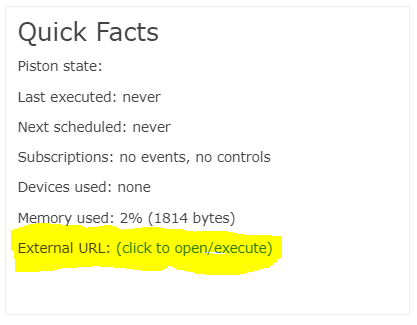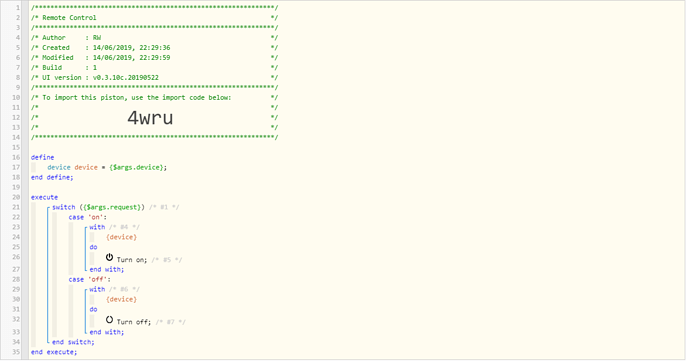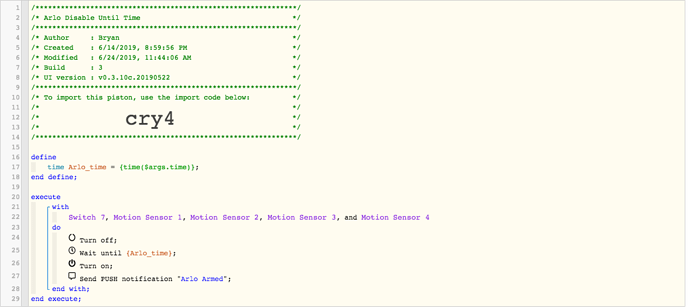Here is a simple piston which can be used by any external service capable of making HTTP calls, from simple bookmarks saved in your phone browser / on your desktop to software packages like Blue Iris or other home automation platforms etc.
With this piston you can control any device by quoting the device name in the URL, so no need to hard code devices into separate pistons.
Find the piston URL here:

Then add the following to the end of the URL:
?device=device_name&request=on (or request=off)
If your device name includes spaces or special characters, you will need to URL encode the name, for example “D - Kitchen” would be encoded to “D%20-%20Kitchen”
i.e. ?device=D%20-%20Kitchen&request=on
You can use an online encoder to make this simple:





